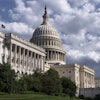
When schools closed during the first year of the pandemic, an immediate and potentially devastating problem surfaced: How would millions of children in struggling families get the school meals many of them depended on?
The U.S. Congress responded by authorizing the Department of Agriculture to roll out two major programs. It launched the “grab and go school meals,” which helped schools provide prepared meals for off-site consumption and distributed funding for the state-operated Pandemic EBT (P-EBT) program, which gave parents debit cards so they could purchase groceries from food retailers.
A new study led by the Harvard and University of Washington schools of public health found that the programs reached more than 30 million children and either directly provided meals or, through the P-EBT program, cash for nearly 1.5 billion meals a month in 2020.
In the new study published Aug. 31 in JAMA Network Open, the researchers found:
- The P-EBT program reached 26.9 million of the 30 million children whose families qualified because of low income at a cost of $6.46 per meal, providing access to 1.1 billion meals a month.
- The grab-and-go program reached 8 million children not eligible for P-EBT at a cost of $8.07 per meal, providing 429 million meals a month.
“When schools had to close across the country during the spring of 2020 due to COVID-19, kids all of a sudden lost access to school lunches and breakfasts. From a public health and nutrition security perspective, this was an urgent concern, given that these meals are critical for students at risk of food insecurity and are also an essential source of nutrition for millions of children,” said Erica Kenney, study lead author and assistant professor of public health nutrition at Harvard.
Kenney said when these programs began, no one really knew how effectively they would reach kids who needed them and at what cost per meal. So the researchers set out to try to answer how these two major policy responses to the loss of regular school meal access worked.
“This study suggests that, in many states, P-EBT can reach the most eligible children at relatively low cost to the government, while a meal distribution model such as grab-and-go school meals can also ensure families directly receive meals and reach children beyond those who are P-EBT-eligible,” said James Krieger, senior author and clinical professor of health systems and population health in the UW School of Public Health.
Now, Krieger said, extensions of these two key projects are being debated in Congress. On July 27, the House Education and Labor Committee sent its 2022 Child Nutrition Reauthorization bill (H.R. 8450), the “Healthy Meals, Healthy Kids Act" to the House floor.
In the following Q&A, Krieger and Kenney discuss what their findings mean for this or similar policy.
What would the new “kids act” do?
Krieger: The act proposes a comprehensive, science-driven reauthorization of federal child nutrition programs that meets the needs of children and families. It includes many familiar and essential programs, such as school meals and the WIC program. It would address food insecurity among children during the summer, when schools are closed, by significantly expanding access to summer meals and creating a nationwide Summer-EBT program. The Summer-EBT program would operate similarly to P-EBT in many ways and provide $75 per month per household on an electronic debit card. It supports school efforts to increase access to summer meals using methods that worked in the grab-and-go school meals program during COVID school closures.
Based on your findings, what should Congress do for kids?
Krieger: Our study offers evidence that these components of the proposed act — an EBT program to distribute the value of school meals, similar to the proposed summer-EBT program, combined with expanded distribution of meals in the community, similar to the expanded summer meals program— were effective in feeding millions of children when schools were closed due to COVID and suggests that they will also likely be effective in delivering food to children during school summer recess. Including both programs in the act would help to assure food access when schools are closed during summer breaks.
Kenney: An important takeaway from our study that may be relevant for the conversation about the Healthy Meals, Healthy Kids Act is that these should be considered together, as a two-pronged strategy. The two approaches complement one another: P-EBT can help make sure that at least the cash value of those missed meals can get out to low-income families efficiently, and grab-and-go meals can ensure that families who may be struggling but may not have a low-enough income to qualify for P-EBT can still get meals. They can also ensure that families who may have more difficulty preparing food — like families experiencing homelessness or with limited kitchen facilities, or even just with limited time — can access nutritionally adequate meals.
What else should Congress consider?
Krieger: The federal government should be investigating strategies for optimizing the cost-effectiveness of grab-and-go school meals. It should also expand the P-EBT program or its equivalent to cover 60 meals per month instead of 40 to match the grab-and-go school meals benefit level. And, it should work to optimize the nutritional quality of the foods provided.
Co-authors include Lina Pinero Walkinshaw and Jessica Jones-Smith, UW Department of Health Systems and Population Health; Ye Shen and Sara Bleich, Harvard T.H. Chan School of Public Health; and Sheila E. Fleischhacker of the Georgetown University Law Center. This research was funded by the Robert Wood Johnson Foundation.






















